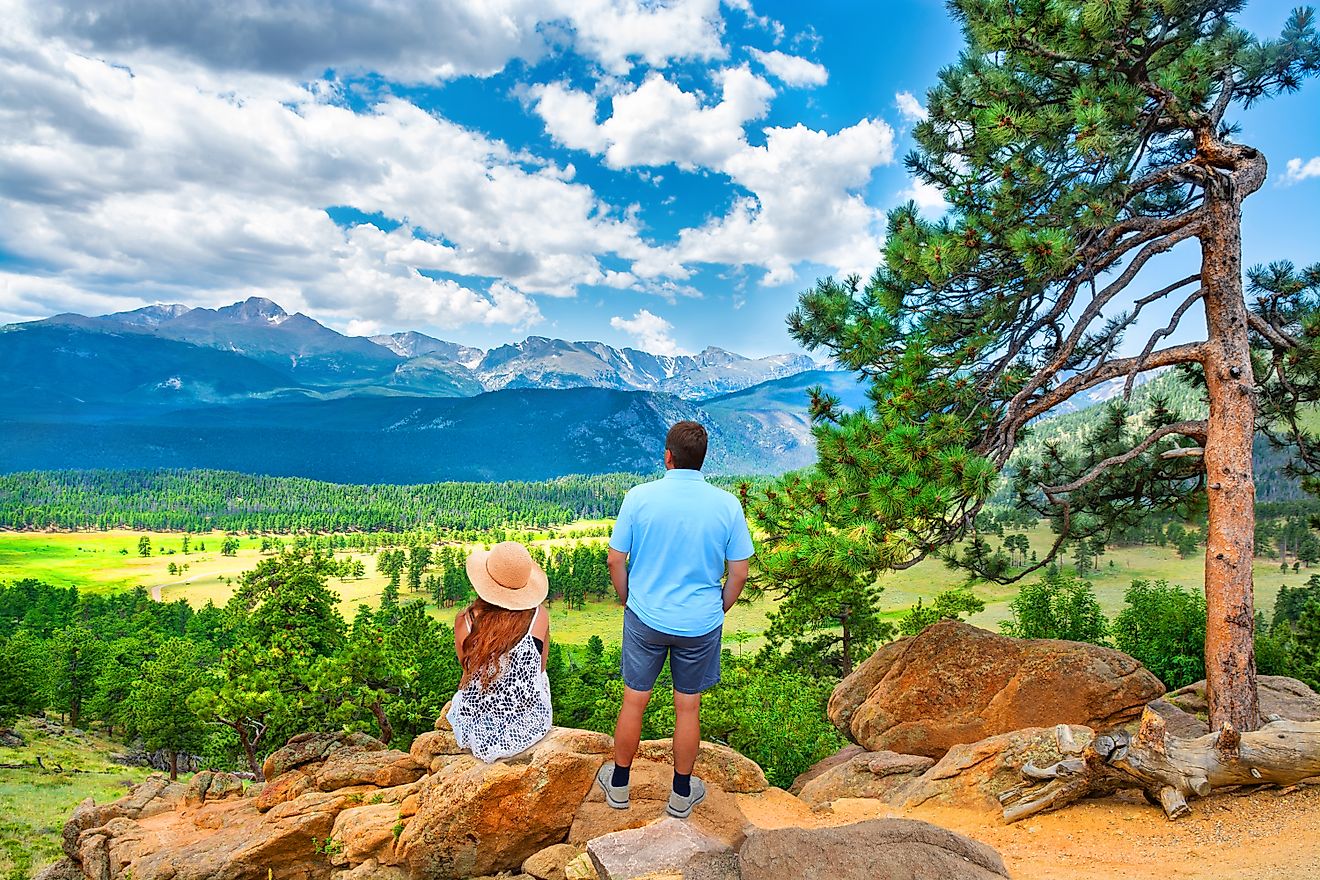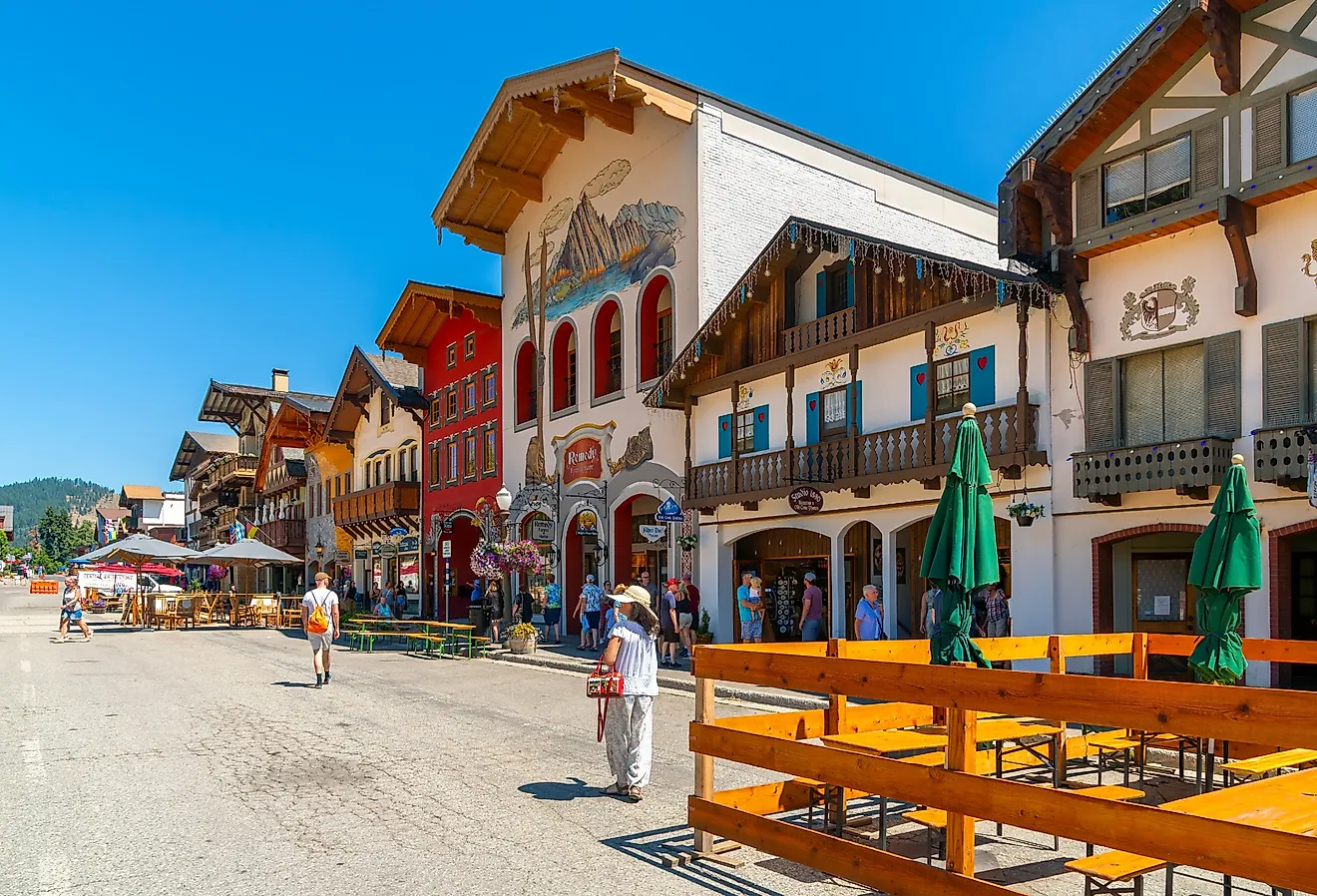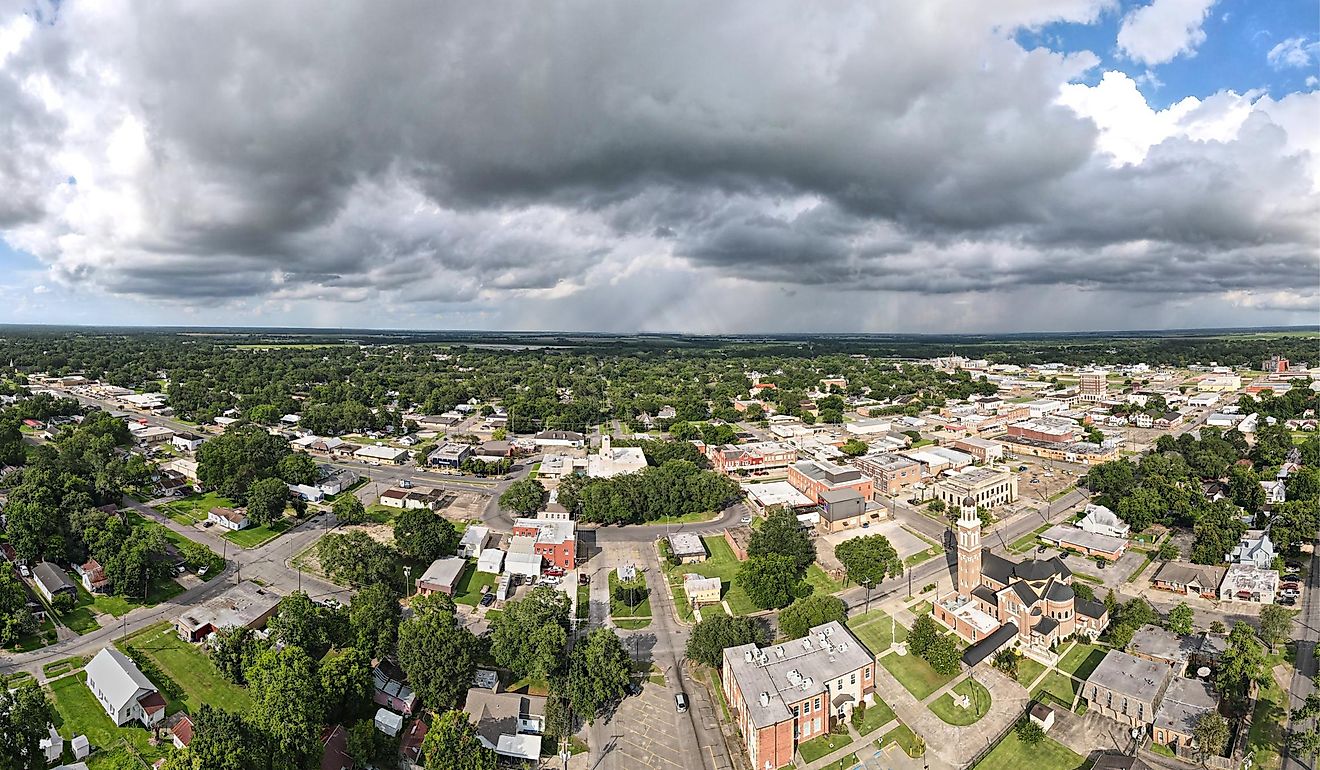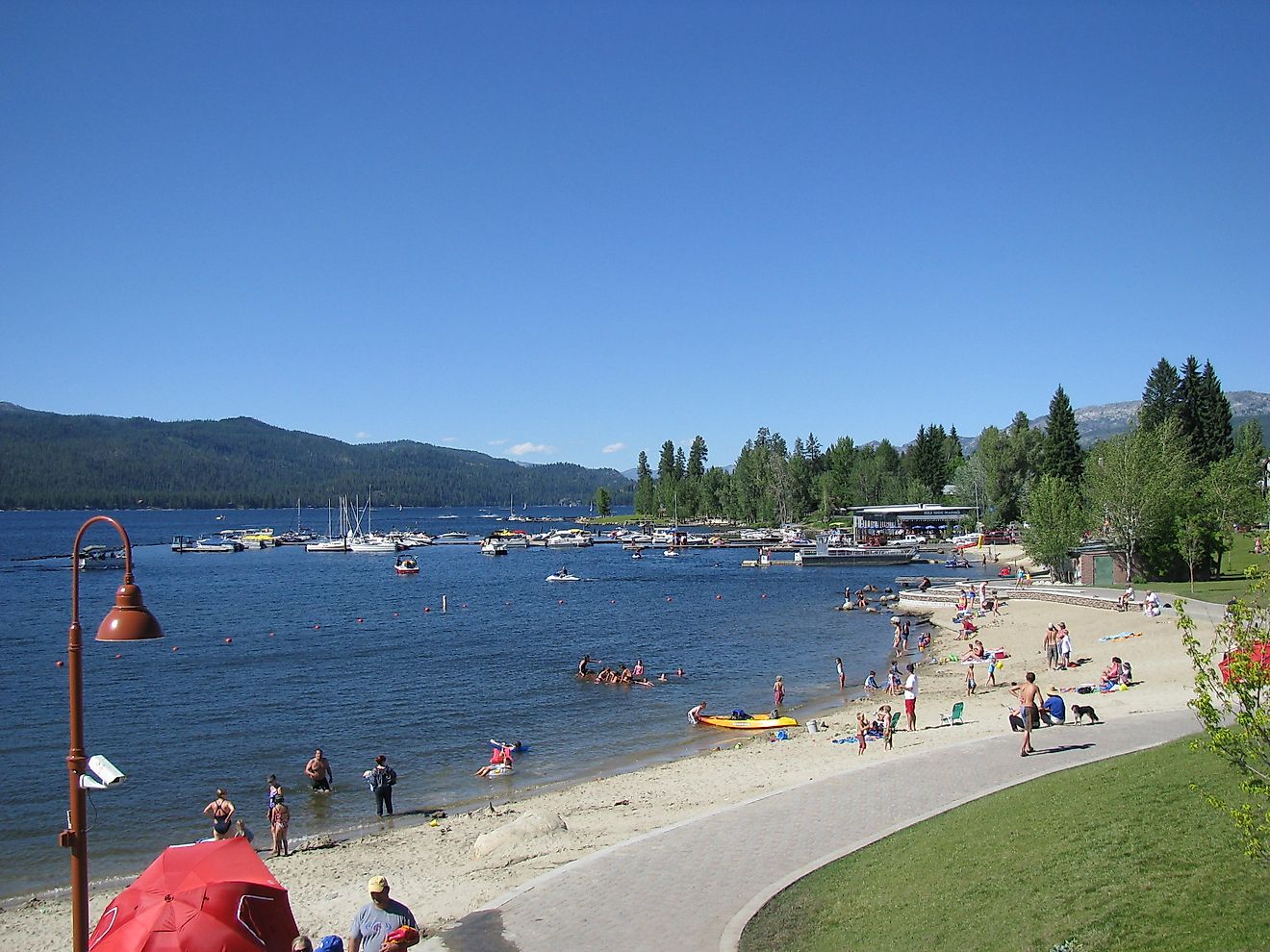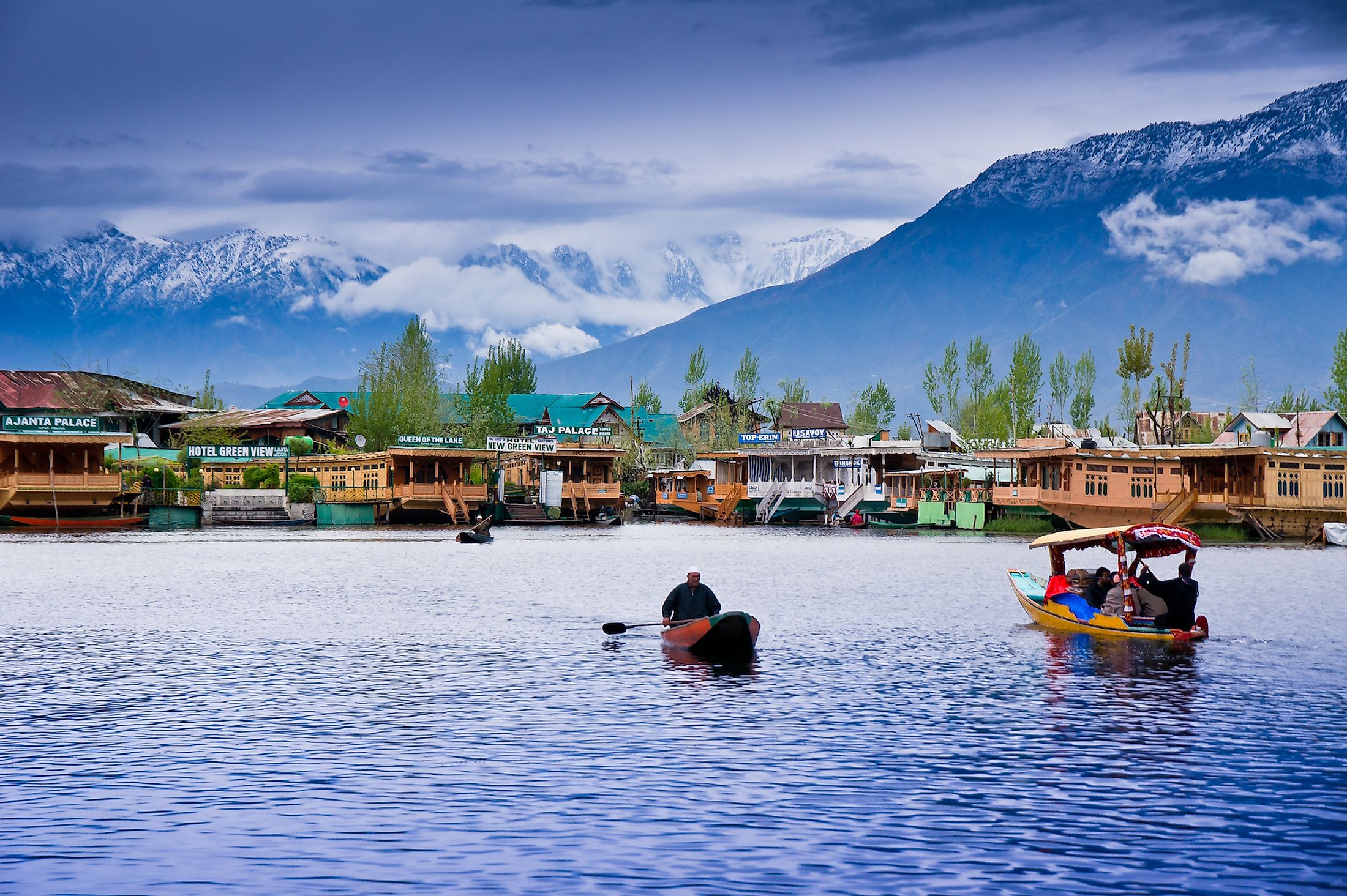
Kashmir
Kashmir is a geographical region that forms the northernmost part of the Indian Subcontinent. The region covers a total area of about 222,200 km2 and is bordered by the Tibet Autonomous Region in the east, the Uyghur Autonomous Region of Xinjiang in the northeast, Pakistan in the west, Afghanistan in the northwest, and the Indian States of Punjab and Himachal Pradesh in the south.
The region of Kashmir has been in dispute between India and Pakistan since they gained independence from the British in 1947. The northern and western parts of Kashmir that are currently administered by Pakistan are referred to as Azad Kashmir and Gilgit-Baltistan. The southern and southeastern parts that are administered by the Government of India are the Union Territories of Jammu and Kashmir and Ladakh. The easternmost part of the region is controlled by China under the territories of the Trans-Karakoram Tract and the Aksai Chin.
Geography
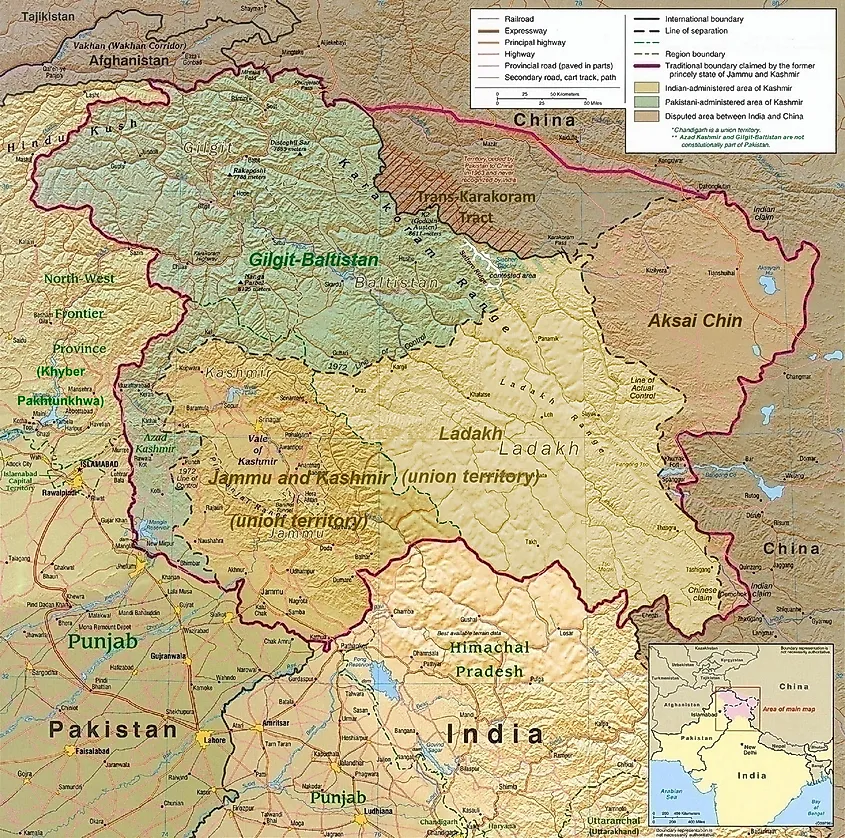
The terrain of Kashmir is mostly dominated by mountains of the Western Himalayas and consists of numerous deep valleys and high plateaus. The heavily forested mountains of the Himalayan foothills and the Lesser Himalayas' Pir Panjal Range separates the southwestern low-lying Poonch and Jammu plains from the highly populated and fertile region of the Vale of Kashmir in the north. Chenab, Indus, and Jhelum are the three main rivers that flow through the region, and their basins divide the Kashmir region into three large valleys. The region’s north and northeastern parts are formed by the Indus River valley, the upper Jhelum River basin forms the Vale of Kashmir that is situated at an elevation of about 1,600 m, while the southern portion of Kashmir is formed by the Chenab river valley. Numerous high-altitude lakes are frequently found at high elevations, whereas there are many freshwater lakes and wetland conservation areas in the lower elevations including the notable Dal Lake, Wular Lake, and the Hokersar wetland area.
Beyond the Great Himalayas in the northern and northeastern portions, the Kashmir region is traversed by the Karakoram mountains. K2, the world’s second-highest peak, rises to an elevation of 8,611 m and is a part of this mountain range. Many significant glaciers including the Biafo and the Siachen glaciers are also located here. The northwestern parts of the region are occupied by the Hindukush mountain range.
The climate of Kashmir ranges from an alpine climate in the higher elevations to a subtropical climate in the lowland areas. The Pir Panjal Range serves as an effective climatic barrier and blocks the monsoon winds to reach the higher Himalayan slopes and the main valley of Kashmir.
Wildlife
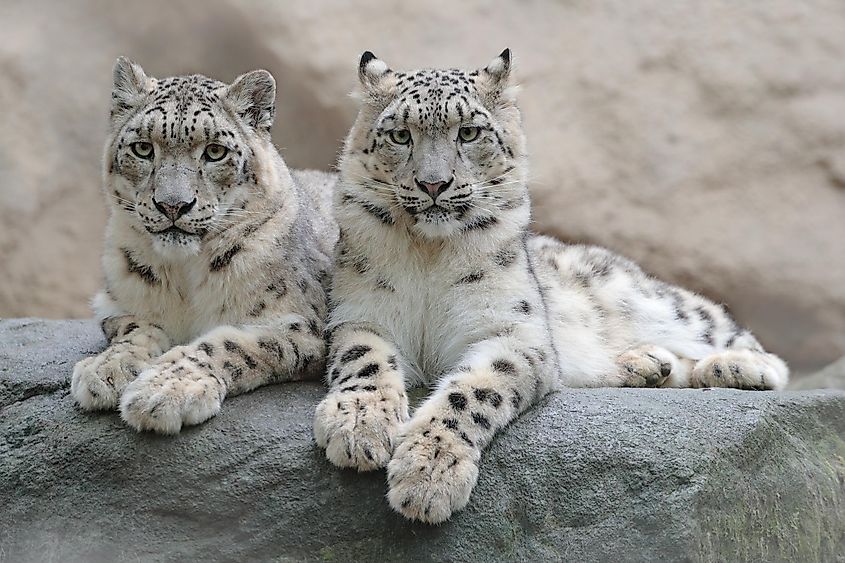
The forests of Kashmir vary according to the altitude and climatic conditions of the region and range from tropical deciduous forests in the Himalayan foothills to the temperate forests in the Vale of Kashmir and the alpine grasslands and meadows of Ladakh and Gilgit-Baltistan. Semi-deciduous floral species including Dalbergia sissoo, Shorea robusta, Pinus roxburghii, and Terminalia tomentosa are found in the higher areas. The temperate areas are dominated by rhododendrons and oaks, trees like Cedrus deodara and Picea smithiana are found in the Blue Pine Zone; The Birch Zone is dominated by herbaceous flowers like geraniums, irises, and primula. In addition to these, several medicinal plants are also found in Kashmir. Spread over 30 ha at the foothills of the Zabarwans Mountain range is the Indira Gandhi Memorial Tulip Garden, which is also Asia’s largest tulip garden.
The Dachigam National Park located in the Kashmir valley is home to the Kashmir stag and the largest black bear population. Himalayan brown bears are found in the Deosai National Park while snow leopards are predominant in Ladakh’s Hemis National Park. Besides these, the region is also home to various terrestrial faunal species of musk deer, leopard cat, red fox, and Himalayan wolf, among others.
Brief History
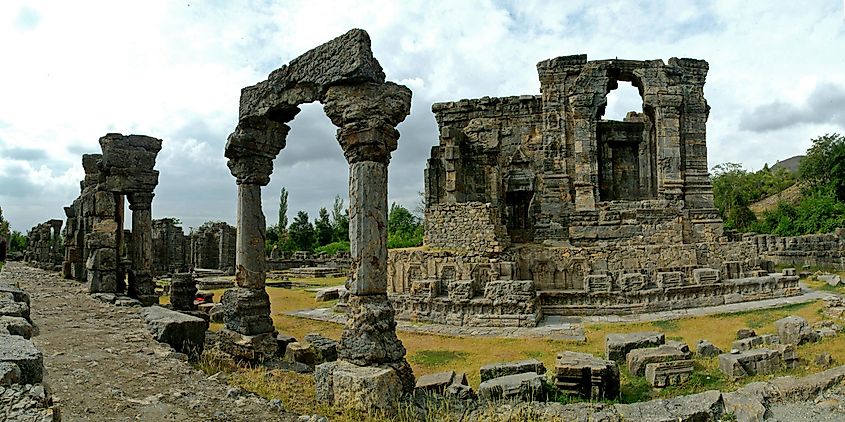
During ancient times, Kashmir was an important center for Hinduism and later Buddhism. Kashmir Shaivism originated in the 9th century. In 1339, the Shah Mir dynasty was founded by Shams-ud-Din Shah Mir, who became Kashmir’s first Muslim ruler. However, the Kashmiri Muslim rule ended after the region was conquered by the Mughal Emperor Akbar in 1585. The Afghan Durranis took over the region from the Mughals in 1751. In 1819, Kashmir became a part of the Sikh Kingdom of Punjab, and then in 1846, it became a part of the Dogra Kingdom of Jammu. After the Sepoy Mutiny of 1857 (also known as the Indian Rebellion of 1857), the Princely State of Kashmir and Jammu was taken over by the British East India Company and therefore came under the direct sovereignty of the British Crown.
Maharaja Hari Singh was the Maharaja of the Princely State of Kashmir and Jammu in 1947 when the British Indian Empire was partitioned into the two independent dominions of India and Pakistan. Due to the Muslim-majority population of the region, it was thought that Maharaja Hari Singh would cede Kashmir with Pakistan. But the Maharaja refused to do so and decided to side with India. Hence, from this time onwards the region of Kashmir became a disputed area between Pakistan and India, and both countries have faced numerous military conflicts for asserting claims over the entire Kashmir region.
The economy of Kashmir is primarily based on agriculture and several economically important crops like wheat, corn, barley, asparagus, and beetroot, as well as fruits like apples, cherries, and peaches are cultivated in the region. Kashmir is known worldwide for its famous Cashmere wool and also for its beautifully embroidered Pashmina shawls, kurtas, silk carpets, and various other products. Kashmir is often referred to as the “Switzerland of the East” for its breathtaking beautiful mountain scenery. The exquisite beauty of the place truly makes Kashmir a “Paradise on Earth.”


